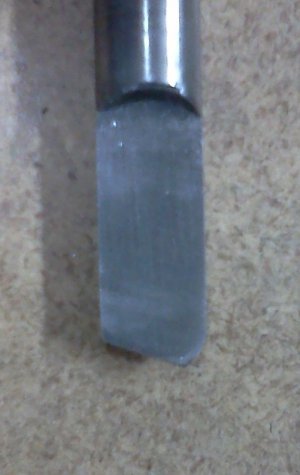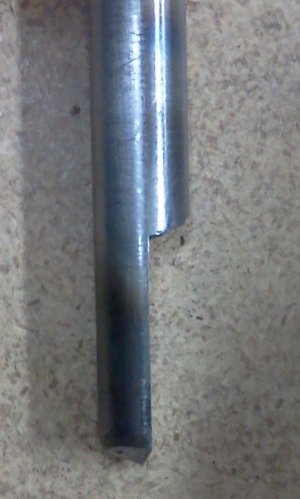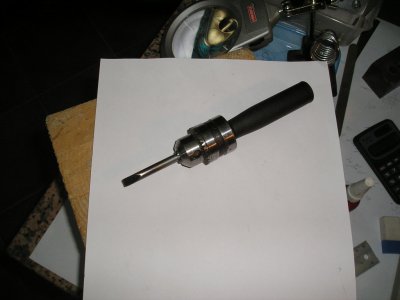I have made 2 "D" bits, and they both worked pretty well. If I get time, I will take some pictures of them later and post them.
The thing about D bits is that they cut very slowly, and they need an accurate starting hole. Run them at low speed, with plenty of oil (at least in steel, where I was using them). You need good lubrication. Also, clear chips frequently; there are no flutes to pull the chips out for you, so you have to retract the tool fully. When cutting a 0.375" hole, I was clearing chips every 0.060" of depth cut. Failure to clear chops can lead to the tool seizing, which is no fun.
They do make a hole with a very fine finish, perhaps as good as a reamer, maybe slightly less, I have not compared the two. The most common case I have seen them used for in the home shop is for drilling long straight holes, where twist drills tend to wander.
To make them, turn a piece of drill rod (I use W-1, but many others use O-1, I believe this is called "silver steel" in most of europe) to the desired diameter. At the cutting end, cut away half the diameter (this dimension is important, ideally you want it exact, but going over a few thousandths is better than going under a few thousandths. Harden, temper to light straw, then sharpen the flat surface.
Here are some pages that may be useful.
http://www.machineconcepts.co.uk/smallpipes/tools.htm
http://www.homemodelenginemachinist.com/index.php?topic=5251.0
DMS




